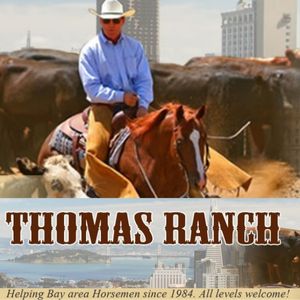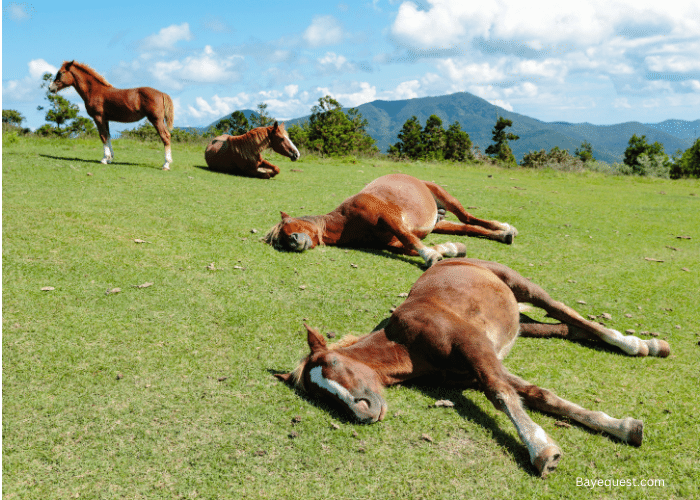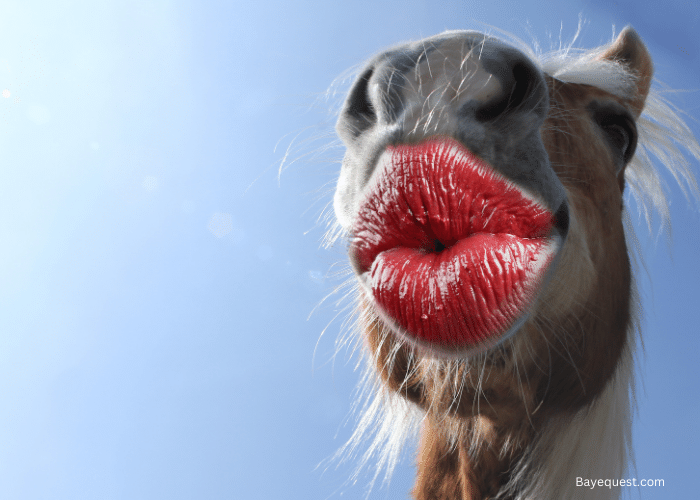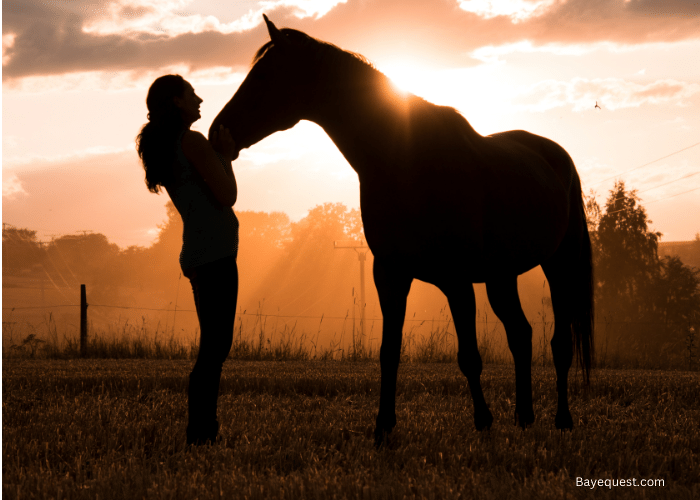Horses have been an integral part of human civilization for thousands of years, serving as both loyal companions and valuable assets. But how well do we really know these incredible creatures? In this blog post, we’ll reveal some fascinating and little-known facts about horses that will make you appreciate these incredible animals even more.
A Horse of a Different Color
Did you know that there are over 350 different breeds of horses, each with their unique traits and characteristics? While the American Quarter Horse remains the most popular breed in the United States, other rare breeds like the Marwari from India and the Akhal-Teke from Turkmenistan boast stunningly distinctive appearances and impressive abilities. Fun fact: the Akhal-Teke is known for its shimmering, metallic coat and incredible endurance.
The Eyes Have It
Horses possess the largest eyes of any land mammal, measuring a whopping 50 millimeters (nearly two inches) in diameter. This impressive feature allows them to have a nearly 360-degree field of vision, helping them stay alert to potential threats. Interestingly, a horse’s eye placement on the side of its head provides better peripheral vision but creates a blind spot directly in front of its nose and behind its tail.
Galloping Through History
Horses first evolved around 55 million years ago, and they have since undergone significant changes. The earliest ancestors of modern horses were small, dog-sized creatures called Eohippus, which had four toes on their front feet and three on their hind feet. Over millions of years, they evolved into the single-toed, large mammals we know today.
Horsepower for the Ages
The term “horsepower” was coined by the Scottish engineer James Watt in the late 18th century as a way to compare the output of steam engines to the power of draft horses. Watt determined that one horsepower was equivalent to a horse lifting 550 pounds one foot in one second. Today, this unit of measurement is commonly used to describe the power of engines in vehicles and machinery.
Sleepy Stallions
Horses have unique sleeping habits that allow them to rest while standing up. Thanks to a special arrangement of muscles and tendons known as the “stay apparatus,” horses can lock their legs in place and doze off without collapsing. However, they still require REM sleep, which can only be achieved while lying down. On average, horses sleep for just three hours per day, with REM sleep accounting for about 30 minutes of that time.
A Language All Their Own
Horses communicate with each other and their human caretakers using a variety of vocalizations, body language, and facial expressions. Whinnies, nickers, and snorts are just a few of the sounds that horses use to express emotions such as fear, excitement, or curiosity. By paying close attention to these cues, equestrians can better understand and bond with their equine partners.
The Need for Speed
Thoroughbred racehorses are some of the fastest animals on the planet, capable of reaching speeds up to 40 miles per hour. This impressive feat is due in part to their unique muscular structure, which allows them to cover an incredible 8.2 meters (27 feet) with each stride. The current world record for the fastest racehorse is held by Winning Brew, a Thoroughbred filly, who clocked a speed of 43.97 miles per hour in 2008.
A Birthday Bash for All
In the Northern Hemisphere, all Thoroughbred racehorses celebrate their birthday on January 1st, regardless of their actual birth date. This tradition dates back to the early days of horse racing when accurate record-keeping was difficult, and the standardized date made it easier to determine a horse’s racing age. In the Southern Hemisphere, the same convention is followed, but the date is set to August 1st.
Horsing Around with Math
Horses are surprisingly adept at learning basic mathematical concepts. A famous example is Clever Hans, a horse in early 20th-century Germany who gained notoriety for his apparent ability to solve arithmetic problems and even read the time. While it was later revealed that Hans was responding to subtle cues from his trainer, the story highlights the intelligence and learning capabilities of these remarkable animals.
Equine Record Breakers
Horses have set some impressive records over the years. The tallest horse on record is a Shire horse named Sampson (later renamed Mammoth), who stood at an incredible 21.2 hands (7 feet 2 inches) tall in 1850. On the other end of the spectrum, the smallest horse ever recorded is Thumbelina, a miniature horse who stands just 17.5 inches tall. And finally, the longest tail ever measured on a horse belongs to a Palomino named Summer, with a tail measuring an astounding 12 feet 6 inches in length.
There’s no doubt that horses are fascinating creatures, with a rich history and a range of incredible abilities. From their unique physical features to their impressive speed and intelligence, these little-known facts about horses only serve to deepen our appreciation for these magnificent animals.
So the next time you encounter one of these equine wonders, remember to share a fact or two and spread the love for our hoofed friends!









